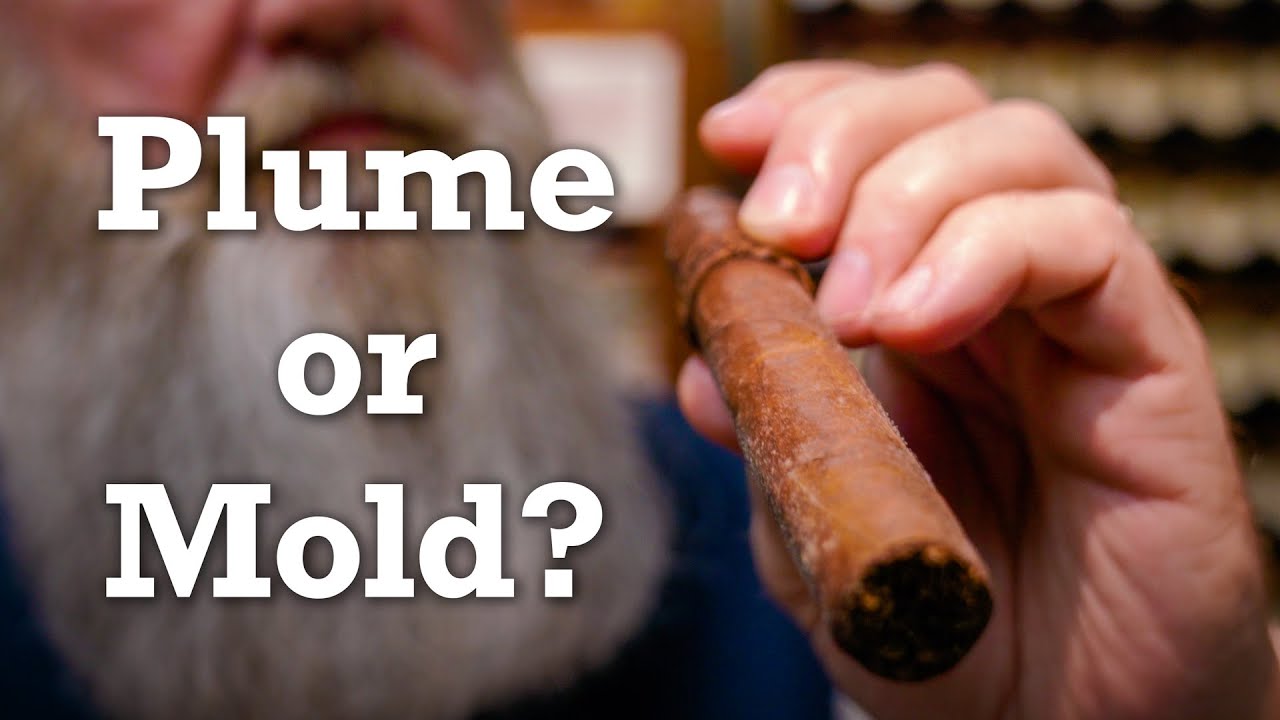The art of enjoying a fine cigar is a tradition steeped in history, culture, and care. In the world of cigars, understanding the difference between cigar plume and mold is critical. While one signifies quality aging, the other can destroy a prized collection. Let’s delve into the importance of distinguishing between these two phenomena and how they affect your cigar experience.
Cigar Mold vs Cigar Plume: What’s the Difference?
Cigar Plume and Mold may seem similar at first glance, but they signify very different things for your cigars.
Visual Appearance:
- Plume: A crystalline substance, often appearing as a soft, powdery, and shiny coating.
- Mold: Fuzzy and usually green, blue, or white.
Texture:
- Plume: Silky and easily wiped off.
- Mold: Thicker and harder to remove.
Formation Process:
- Plume: Caused by the oils in the cigar, indicating proper aging.
- Mold: Occurs due to improper storage and high humidity.
Effects on Cigars:
- Plume: Enhances flavor and quality.
- Mold: Deteriorates the cigar, rendering it unsmokable.
Images or close inspection can help differentiate between these two phenomena.
What is Cigar Plume?
Cigar plume, or “bloom,” is the epitome of a well-aged cigar. It occurs when the oils within the cigar crystallize on the surface, indicating that the cigar has been stored under ideal conditions. It’s a sign of maturity, adding a layer of complexity to the cigar’s flavor. Proper storage and aging conditions are essential to achieve this desired effect.
What is Mold?
In contrast, mold is a fungal growth that occurs under excessive humidity and poor ventilation. Unlike plume, mold is an unwelcome guest in a cigar collection. It can ruin the appearance, taste, and integrity of the cigars, making them unfit for consumption.
What Causes Mold?
Mold in cigars is usually a result of:
- Excessive Humidity
- Poor Ventilation
- Inadequate Storage Conditions
Understanding these factors can help in preventing the growth of mold and maintaining the quality of your cigars.
Using Distilled Water in Your Humidor
Distilled water is vital in maintaining the right humidity levels in your humidor. It prevents minerals from building up, unlike other types of water that might contain impurities leading to mold growth. Regular checks and careful attention to humidity levels can save your prized collection from disaster.
Throw Out Any Moldy Cigars
Quick action is essential if you spot mold on any cigars. Immediate removal and careful inspection of other cigars in your collection can prevent further spread. Remember, once a cigar is moldy, it’s best to discard it.
Replace Your Humidification Unit
Regular inspection and replacement of the humidification unit are crucial for optimal cigar storage. A malfunctioning unit can lead to undesirable humidity levels, promoting mold growth.
Buying Cigars from a Reputable Retailer
Investing in cigars from trustworthy retailers ensures quality and authenticity. It guarantees that the cigars have been stored correctly and are free from mold, giving you the best possible smoking experience.
When You’re Unsure Whether It’s Mold or Plume
If you find yourself in doubt, it’s always best to seek expert advice. High-quality magnification or consultation with a seasoned tobacconist can guide you in identifying whether you’re dealing with plume or mold.
Proper Humidor Maintenance
- Temperature Control: Maintain a temperature between 65-70°F.
- Ventilation: Ensure proper airflow within the humidor.
- Regular Cleaning: Prevent dust and mold buildup.
These practices guarantee an optimal environment for your cigars, keeping them fresh and flavorful.
Storing Cigars Long-term
Long-term storage requires careful attention to:
- Humidity Levels: Maintain at 65-70%.
- Temperature: Consistent control.
- Rotation: Regularly rotate cigars for even aging.
Cuban Cigars and Quality Brands
Cuban cigars are renowned for their quality and flavor. Choosing reputable brands ensures a rich and satisfying smoking experience. The appeal of well-known brands lies in their consistent quality, making them a preferred choice for many aficionados.
Conclusion
Understanding the difference between cigar plume and mold is more than a mere detail; it’s the cornerstone of proper cigar care and enjoyment. Whether you are a seasoned cigar enthusiast or a beginner, this knowledge empowers you to maintain a collection that provides pleasure and satisfaction. Remember, the art of cigar enjoyment lies in meticulous care, quality choices, and appreciating the subtleties that make each cigar a unique experience.
FAQs
Can mold on cigars make you sick?
Yes, smoking a moldy cigar can lead to health issues as mold contains harmful toxins.
Is cigar plume a sign of a good cigar?
Yes, plume indicates proper aging and can enhance the flavor of the cigar.
How often should I check my humidor for mold?
Regular inspections, at least once a week, can help in early detection and prevention of mold.

